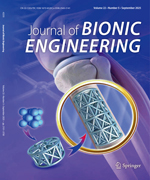Recently, various kinds of biomimetic robots have been studied. Among these biomimetic robots, water-running robots that mimic the characteristics of basilisk lizards have received much attention. However, studies on the performance with respect to different geometric parameters and gaits have been lacking. To run on the surface of water, a water-running robot needs suffi-cient force with high stability to stay above the water. We experimentally measured the performance of the foot pads with different geometric parameters and with various gaits. We measured and analyzed the forces in the vertical direction and rolling angles of five different foot pad shapes: a circular shape, square shape, half-spherical shape, open half-cylinder shape, and closed half-cylinder shape. Additionally, the rolling stabilities of three kinds of gaits: biped, trotting, and tripod, were also empirically analyzed. The results of this research can be used as a guideline to design a stable water-running robot.

 Table of Content
Table of Content
 Table of Content
Table of Content